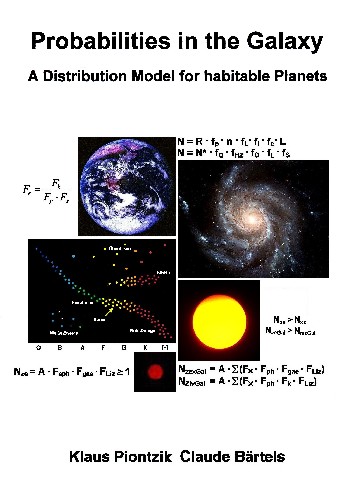| In September 2015,
a total of 1,952 exoplanets were known.
According to the "Habitable Exoplanets Catalog"
[1] there are 31 star systems with
planets in habitable zones. 21 were
superearth and only 10 were classified
as approximatly earth-great. Only in 4
systems could you classify planets as approximatly
earth-like. [2] If 31 systems of 1,952 systems have habitable planets, this corresponds to a share of 1.588 %, so: Fh2 = 0.015,88 = 31: 1,952. NASA released on 9 May 2016, the latest data on the Kepler telescope. [3] [4] In the meantime, 1,284 new exoplanets have been discovered.Thus, a total of 2,325 exoplanets are now known. There are probably rocky planets in 550 systems, like Earth. 9 planets are in a habitable zone. Thus, the probability is Fh3 = 0.016,36 = 9:550 for habitable planets. According to Wikipedia, as of October 1, 2017, a total of 3,671 exoplanets in 2,751 systems are known, including 616 systems with two to seven planets. [5] According to the "Habitable Exoplanets Catalog" [1] of December 2017, 53 star systems with planets exist in habitable zones. 30 are super-earths, 22 are classified as approximately earth-great and a planet of the class subearth, thus planets which are smaller than the earth. Only in 5 of 13 selected systems, planets could be classified as approximately earth-like. If of 2,751 known star systems with planets, 53 systems with habitable planets exist, then the probability is Fh4 = 0.019,265 = 53:2.751for habitable planets. The data from 2015 to 2017 show the minimum and maximum probability of a planet in the habitable zone:
which corresponds
quite well with the value Fh1 = 0.016,588 =
10:603 from the Petigura investigation. The error is 4
percent.
Overall, this
results in a good agreement between the Petigura data and
the observations made in the meantime and the resulting
catalogue data. |

|
176 sides, of them 64 in Color 76 pictures 11 tables Production and publishing: Books on Demand GmbH, Norderstedt ISBN 9-783-7528-5524-1 Price: 22 Euro |
|